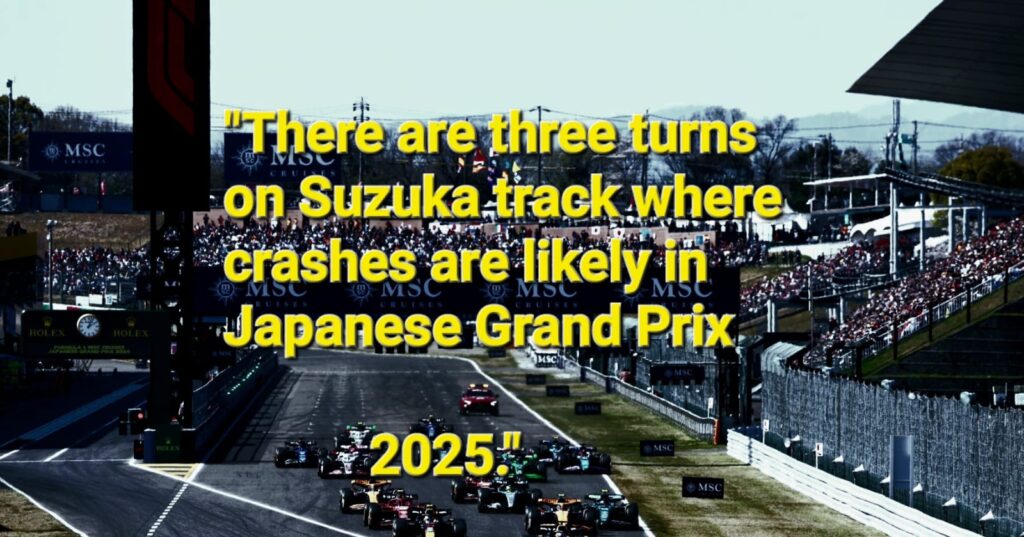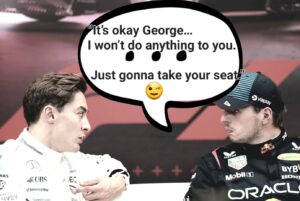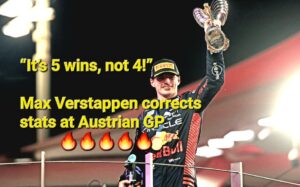Why Suzuka Track Pushes F1 Drivers to the Edge?

- by Dr. AK Rana
From Jack Doohan’s massive crash at Turn 1 in Suzuka to Alonso getting beached in the gravel, and even grass catching fire from the sparks of high-speed Formula 1 cars—Suzuka has already delivered a chaotic practice session.
With high-speed winds spreading fire and multiple red flags disrupting the session, the Japanese Grand Prix is shaping up to be an unforgettable event.
Practice 1 went by smoothly, with teams gathering crucial data to fine-tune their setups.
But the tranquility didn’t last long.
Just 10 minutes into Practice 2, Alpine rookie Jack Doohan suffered a high-speed crash at Turn 1, bringing out the first red flag.
When asked if he was okay,
Doohan responded,
“I am okay, but what happened?”—a reaction that underscores the uncertainty around the cause of his crash.
Whether it was a braking issue or an unexpected downforce loss, Alpine now has an overnight rebuild ahead of qualifying.
As the session resumed, another red flag followed. This time, it was Fernando Alonso in the Aston Martin, stranded in the gravel. While he was unharmed and made his way back to the paddock on a scooter, his car had to be lifted by a crane. The interruptions didn’t stop there—a third red flag followed by next, were triggered when sparks from an F1 car ignited dry grass around the circuit, with strong winds helping spread the fire.
Despite these disruptions, McLaren ended the session on top, while others struggled to complete meaningful laps. With a practice session like that, the expectations for the rest of the weekend are sky-high.
Why is Suzuka Called a Driver’s Track?
Suzuka is one of the most demanding circuits on the F1 calendar, famous for its unforgiving layout and technical complexity. Its 5.8 km figure-eight design features 18 turns, many of which require absolute precision.
The track’s unique characteristics, including rapid direction changes, high-speed entries, and gravel traps awaiting the slightest mistake,
make it both a driver’s dream ,
and a nightmare.
This circuit has witnessed some of F1’s most memorable—and tragic—moments. No one can forget 2014, a race we all wish had never happened.
..
A Sector-by-Sector Breakdown of Danger Zones
First Sector
Turn 1 – A high-speed entry requiring controlled braking. Being too aggressive can lead to understeer, sending the car off the track. (Exactly what happened with Jack Doohan.)
S-Curves (Turns 3-7) – A flowing sequence of left-right switchbacks. One wrong move ruins the entire rhythm, especially critical during qualifying.
Turn 8 (Dunlop Curve) – A long, sweeping left-hander. Tire wear becomes a concern here, especially during the race, where managing pit stops and strategy becomes crucial.
Middle Sector
Degner Curves (Turns 9-10) – Fast, technical corners where just brushing the inside curb can push a car into the gravel. Alonso experienced this first-hand in practice.
Turn 11 (Hairpin) – A slow-speed, heavy-braking zone.
A classic overtaking spot, but also risky. Lock-ups and rear-end collisions are always on the cards.
Final Sector
Spoon Curve (Turns 13-14) – Requires strong traction and tire preservation. Mistakes here can kill exit speed onto the straight, ruining lap times.
Casio Triangle (Turns 16-18) – The final chicane. Precision braking is key. A fraction too late or early, and you’re in the gravel or worse—the wall. Red flags are no stranger here.
So, How Many Crash Zones Are There Really?
At least three major ones stand out:
1. Turn 1
2. Degner Curves (Turns 9-10)
3. Casio Triangle (Turns 16-18)
But realistically, with Suzuka’s layout and wind conditions,
the whole track is a trap waiting to spring.
..
Will we see another crash?
Or will the race shock us with a clean run?
Unlikely.
Suzuka rarely plays nice, especially not in 2025.
Suzuka will push drivers to their limits, testing their muscle memory, simulator practice, confidence in their machinery,
and trust in their teams.
And to spice things up, there’s even a chance of rain—which could throw a lifeline to those with slower cars, leveling the playing field.
(Ha… Ha… Ha…)
Stay tuned with Halleysclinic.com
Share your thoughts in the comments!
Contact: halleysclinic@gmail.com
Don’t forget to follow our Instagram account https://www.instagram.com/halleysclinic






1 thought on “Why Suzuka Track Pushes F1 Drivers to the Edge?”